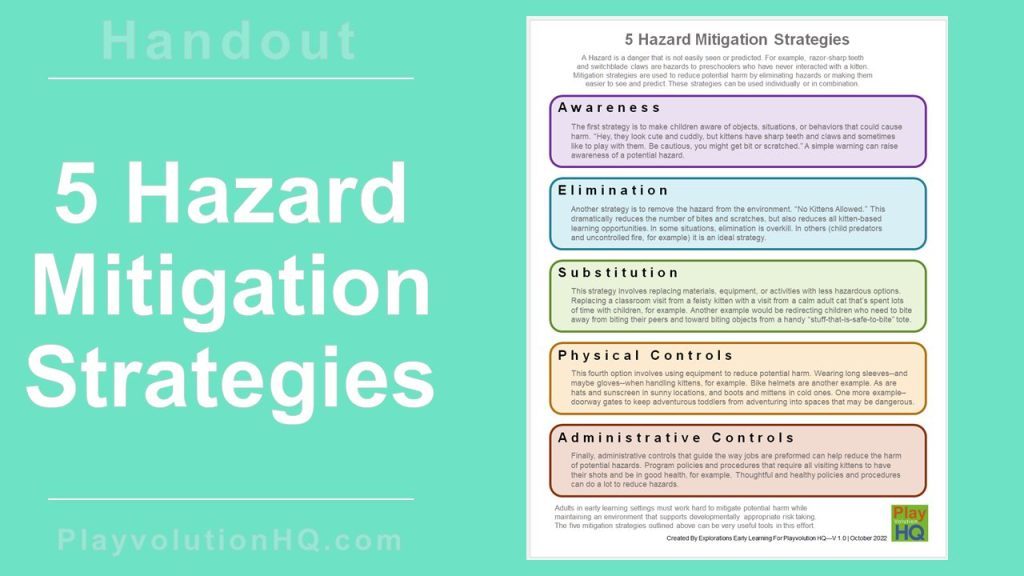Flood Preparedness For Livestock: Mitigation And Response Strategies

Table of Contents
Pre-Flood Mitigation Strategies for Livestock
Proactive planning is key to minimizing the impact of floods on your livestock. Implementing pre-flood mitigation strategies significantly reduces the risk of loss and injury.
Developing a Flood Response Plan
A comprehensive livestock flood plan is your first line of defense. This plan should detail all aspects of flood response, ensuring a coordinated and efficient reaction to a flood emergency.
- Evacuation Routes: Identify multiple escape routes leading to high ground, considering potential road closures. Map these routes clearly and share them with all involved personnel.
- Emergency Contacts: Compile a list of essential contacts including veterinary services, emergency services, neighbors who can assist, and agricultural agencies. Keep this list readily accessible.
- Safe Locations: Pre-determine safe locations for your livestock, considering factors like elevation, accessibility, and availability of resources (water, feed). These locations should ideally be higher ground, away from flood-prone areas. Consider building temporary shelters in these locations in advance.
- Flood Risk Assessment: Conduct a thorough flood risk assessment of your property. Identify vulnerable areas, potential weaknesses in infrastructure, and possible pathways for floodwater. This assessment informs your mitigation strategy and evacuation planning.
- Regular Review: Regularly review and update your animal evacuation plan, taking into account changing weather patterns, predicted flood risks, and any improvements or changes to your property. This ensures the plan remains relevant and effective.
Securing Buildings and Infrastructure
Strengthening your existing infrastructure significantly improves its resilience against flood damage.
- Flood-Resistant Barn: Reinforce weak points in barns and other animal housing. This may involve strengthening foundations, improving drainage around buildings, and installing flood barriers. Consider investing in a flood-resistant barn design for new constructions.
- Hazardous Material Security: Secure any potentially hazardous materials (chemicals, fuels, medications) to prevent them from being washed away and contaminating water sources or causing harm to animals.
- Elevated Feed and Supplies: Elevate feed, bedding, and other essential supplies above potential flood levels to prevent them from being damaged or lost. Use elevated platforms or waterproof storage containers. This ensures the continued well-being of your livestock even in flooded conditions. Proper secure feed storage is crucial.
Identifying and Preparing High-Ground Evacuation Areas
Identifying suitable high-ground evacuation areas is crucial for the successful relocation of your livestock.
- Suitable Locations: Locate areas of high ground that are large enough to accommodate your livestock comfortably, offer protection from the elements, and have sufficient space for maneuverability.
- Resource Availability: Ensure these areas have access to clean water and sufficient feed supplies to sustain your animals during and after the flood. Pre-positioning supplies significantly reduces stress during an emergency.
- Emergency Animal Transport: If necessary, pre-arrange transportation for your livestock, whether through trailers, trucks, or other means. Contact local haulers or agricultural services to establish transportation availability in advance. Planning for emergency animal transport is an important aspect of your preparedness plan.
During-Flood Response Strategies for Livestock
Rapid and decisive action during a flood is paramount to ensure the safety of your livestock.
Immediate Actions During a Flood
When a flood is imminent, prioritize immediate actions to protect your animals.
- Livestock Relocation: Move your livestock to higher ground immediately if flood warnings are issued. Do not wait for the flood to approach. This is the most critical step in ensuring their survival. Implement your livestock relocation strategy immediately.
- Securing Remaining Animals: If relocation isn't immediately possible, secure any remaining animals in safe, elevated locations within your facilities. Prioritize their safety above all else.
- Continuous Monitoring: Continuously monitor water levels and weather reports through reliable sources. Stay informed about the flood's progression and potential changes in its impact on your livestock. This helps in making informed decisions during the emergency.
Ensuring Animal Safety and Well-being
Providing proper care for your livestock during and after the flood is crucial for their survival and recovery.
- Adequate Resources: Provide your animals with adequate food, clean water, and suitable shelter to protect them from the elements. Maintaining their basic needs helps mitigate stress and reduces the risk of illness.
- Animal Separation: Separate animals to reduce stress and prevent injury from fighting or panic. This is particularly important if the animals are already distressed due to the flooding. Maintaining animal welfare is of utmost importance.
- Medical Attention: Administer any necessary medication or treatment to animals showing signs of injury or illness. This may require consulting a veterinarian. Being prepared for emergency livestock health issues is vital.
Seeking Emergency Assistance
Don't hesitate to reach out for assistance when facing a flood.
- Emergency Services: Contact local emergency services and agricultural agencies for help with livestock rescue, relocation, or other critical needs. Early contact ensures timely support.
- Support Networks: Utilize available resources and support networks within your community. Neighbors, local farmers, or agricultural organizations can provide crucial assistance during the emergency.
Post-Flood Recovery Strategies for Livestock
The post-flood recovery phase requires careful attention to ensure the long-term well-being of your livestock and your operation.
Assessing Damage and Losses
A comprehensive assessment of damage is the first step in the recovery process.
- Thorough Inspection: Thoroughly assess any damage to buildings, infrastructure, and livestock. Document everything meticulously for insurance purposes.
- Documentation: Keep detailed records of all losses, including injured or deceased animals, damaged property, and lost feed supplies. This is critical for insurance claims.
Cleaning and Disinfecting
Cleaning and disinfecting is crucial to prevent the spread of disease after a flood.
- Sanitation: Clean and disinfect all affected areas to prevent the outbreak of waterborne diseases. Remove all contaminated materials properly.
- Waste Disposal: Dispose of contaminated materials appropriately according to local regulations.
Providing Ongoing Care and Support
The recovery process requires ongoing monitoring and care for your livestock.
- Veterinary Care: Continue monitoring livestock health and provide necessary veterinary care. Seek veterinary assistance for any injured or ill animals.
- Disaster Relief: Apply for any available government aid or disaster relief programs to help with recovery efforts.
Conclusion
Effective flood preparedness for livestock is vital for protecting your animals and your livelihood. By implementing the mitigation and response strategies outlined above, you can significantly reduce the impact of floods on your livestock operation. Remember to develop a comprehensive flood response plan, secure your infrastructure, and prepare evacuation strategies. Regularly review and update your plan to ensure its effectiveness. Don't wait for a flood to strike – proactively implement flood preparedness for livestock today and safeguard your valuable assets.

Featured Posts
-
 Washington Capitals Alex Ovechkins Advice To Young Russian Nhl Players
May 07, 2025
Washington Capitals Alex Ovechkins Advice To Young Russian Nhl Players
May 07, 2025 -
 Cavaliers Defeat Clippers Despite Late Rally
May 07, 2025
Cavaliers Defeat Clippers Despite Late Rally
May 07, 2025 -
 John Wick 5 Why John Wick Cant Return Even If Keanu Reeves Character Is Resurrected
May 07, 2025
John Wick 5 Why John Wick Cant Return Even If Keanu Reeves Character Is Resurrected
May 07, 2025 -
 Ovechkins Record Breaking Goal The Pressure On Ilya Samsonov
May 07, 2025
Ovechkins Record Breaking Goal The Pressure On Ilya Samsonov
May 07, 2025 -
 Xrps Potential Record High The Impact Of The Grayscale Etf Application
May 07, 2025
Xrps Potential Record High The Impact Of The Grayscale Etf Application
May 07, 2025
Latest Posts
-
 Black Rock Etf Poised For 110 Growth Why Billionaires Are Investing
May 08, 2025
Black Rock Etf Poised For 110 Growth Why Billionaires Are Investing
May 08, 2025 -
 Billionaires Top Pick The Etf Predicted To Soar 110 By 2025
May 08, 2025
Billionaires Top Pick The Etf Predicted To Soar 110 By 2025
May 08, 2025 -
 The Bitcoin Markets Volatility And Trumps Crypto Experts View
May 08, 2025
The Bitcoin Markets Volatility And Trumps Crypto Experts View
May 08, 2025 -
 Trump Appointees Bold Bitcoin Price Forecast Following Recent Surge
May 08, 2025
Trump Appointees Bold Bitcoin Price Forecast Following Recent Surge
May 08, 2025 -
 360
May 08, 2025
360
May 08, 2025
